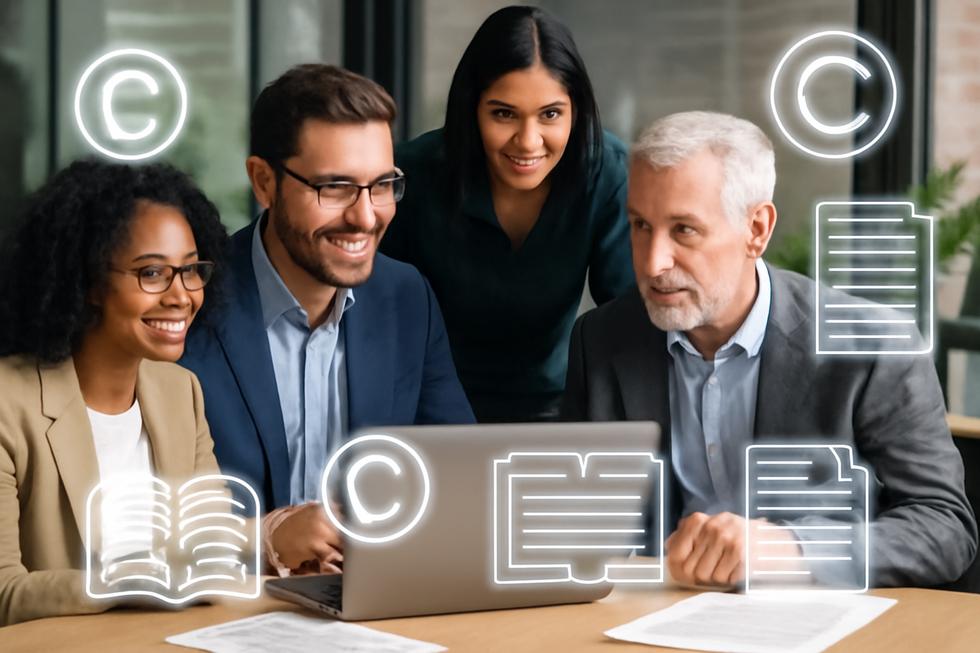Introduction
Protecting intellectual property is a fundamental concern for business owners. Navigating copyright law and understanding public domain status can significantly affect how your business uses creative works and avoids legal pitfalls. Copyright grants creators exclusive rights to their original works for a limited time, after which these works generally enter the public domain, enabling free use. This dynamic impacts marketing materials, product development, and content strategies. This article breaks down the fundamentals of copyright law and public domain, clarifies copyright duration and expiration, outlines the criteria for public domain status, highlights legal exceptions and restrictions, explains protections for new editions of public domain works, and directs you to practical resources. Together, these chapters offer comprehensive knowledge empowering your business to make informed, strategic IP decisions.
Tables of Contents
Chapter 1: Fundamentals of Copyright Law and Public Domain
- Navigating Rights and Protections: The Legal Framework Shaping Copyright and Public Domain
- Economic Impact of Copyright and Public Domain: Monetization, Market Incentives, and Emerging Trends
- Navigating Digital Innovation: How AI and Online Distribution Redefine Copyright and Public Domain
- Geopolitical Dynamics Shaping International Copyright and Public Domain Enforcement
- Navigating the Societal Balance: Protecting Creators While Expanding Public Access
Chapter 2: Duration and Expiration of Copyright in Relation to Public Domain
- How Legal Limits Define Copyright Lifespan and Public Domain Access
- Understanding Copyright Timelines and Public Domain Entry Across Creative Works
- Economic Dynamics Shaped by Copyright Duration and the Public Domain Transition
- Global Variations in Copyright Terms and Their Impact on Public Domain Accessibility
- How Copyright Duration Shapes Societal Access and the Growth of the Public Domain
Chapter 3: Defining Public Domain: Criteria and Categories under Copyright Law
- How Copyright Expiration Opens the Doors to the Public Domain
- Federal Government Works: Navigating Public Domain Status under Copyright Law
- Voluntary Dedication: A Proactive Pathway into the Public Domain
- Defining Non-Copyrightable Works That Shape the Public Domain
- The Role of Historical Copyright Formalities in Defining Public Domain Eligibility
Chapter 4: Navigating Legal Exceptions: Fair Use and Fair Dealing within Copyright and Public Domain
- Balancing Access and Rights through Fair Use and Fair Dealing in Copyright Law
- Educational Exceptions: Enabling Teaching Within Copyright’s Legal Boundaries
- Unlocking Creativity: The Essential Role of Public Domain Within Copyright’s Legal Framework
- Navigating the Balance Between Exclusive Rights and Public Access in Copyright
- Navigating Jurisdictional Differences in Copyright Exceptions and Public Domain Use
Chapter 5: Navigating Copyright Protection in New Editions of Public Domain Works
- Balancing Original Creativity and Public Domain Freedom: Legal Boundaries for New Editions
- Digital Innovations Shaping Copyright and Access Controls for New Editions
- Navigating Economic Incentives and Market Effects of Copyright on Enhanced Public Domain Editions
- Cross-Border Complexities in Copyright for New Editions: International Law and Geopolitical Dynamics
- Balancing Innovation and Access: Societal Impacts of Copyright on New Editions of Public Domain Works
Chapter 6: Practical Resources and Guidance on Copyright Law and Public Domain
- Navigating Legal Research Tools and Expert Resources for Copyright and Public Domain Clarity
- Navigating Public Domain: Essential Strategies for Verifying and Using Content Responsibly
- Navigating Academic Copyright Compliance: Essential Tools and Guidelines for Educators
- Decoding Public Domain and Creative Commons: A Practical Guide for Confident Content Use
- Effective Rights Protection and Enforcement Strategies for Copyright Holders in a Digital Landscape
Chapter 1: Fundamentals of Copyright Law and Public Domain
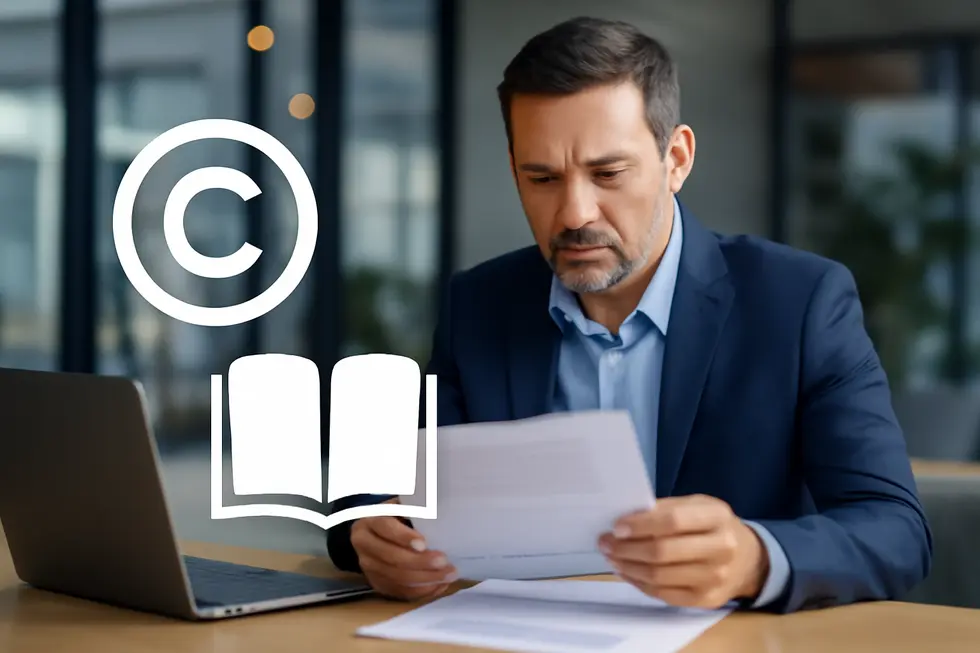
1. Navigating Rights and Protections: The Legal Framework Shaping Copyright and Public Domain
Navigating Rights and Protections within copyright law centers on granting creators exclusive control over original works fixed in tangible form. These rights include reproduction, distribution, public performance, display, and derivative creations, activating automatically upon fixation without mandatory registration. Meanwhile, the public domain comprises works free from copyright due to expiration, ineligibility, or explicit waiver, allowing unrestricted public use. Legal mechanisms such as the Digital Millennium Copyright Act (DMCA) enforce these rights online by enabling takedowns of infringing content. This framework balances creator protections with eventual public access, ensuring that creativity fuels both private benefit and shared cultural enrichment. More insights are available through this copyright distribution rights overview. For official guidance, the U.S. Copyright Office provides extensive resources.
2. Economic Impact of Copyright and Public Domain: Monetization, Market Incentives, and Emerging Trends
Copyright law fosters economic growth by granting creators exclusive rights for a limited time, enabling monetization and incentivizing innovation. This temporary monopoly allows creators to license, sell, or distribute their works, which drives investment in creative industries and supports job creation. However, these exclusive rights eventually expire, allowing works to enter the public domain, unlocking free cultural exchange and new creative opportunities without legal barriers. Market dynamics are shaped by enforcement challenges, such as piracy losses, which can undermine economic value. Recent shifts—including copyright settlements affecting AI training datasets—highlight evolving cost structures that recognize creators’ contributions while balancing technological progress. Understanding these economic effects is crucial for maintaining a dynamic creative ecosystem. For deeper insights, see copyright definition economics business and the U.S. Copyright Office public domain resources.
3. Navigating Digital Innovation: How AI and Online Distribution Redefine Copyright and Public Domain
Advances in digital creation and distribution challenge traditional copyright principles by blurring lines of human authorship and originality. AI-generated works with minimal human input lack copyright protection under current law, prompting complex questions about ownership and licensing. At the same time, rapid digital dissemination complicates clear distinctions between copyrighted and public domain materials, raising jurisdictional and ethical issues, especially as AI training often uses copyrighted data without explicit permission. Legal frameworks evolve to balance creators’ rights, public access, and technological innovation, emphasizing transparency and fair use. These shifts demand new legal approaches to manage rights and maintain the delicate balance foundational to copyright law. For more comprehensive insights, see the discussion on copyright distribution rights and AI’s copyright impact (Hugging Face blog).
4. Geopolitical Dynamics Shaping International Copyright and Public Domain Enforcement
Geopolitical dynamics critically shape international copyright law and the public domain by influencing standards, enforcement, and compliance. Trade agreements like the WTO’s TRIPS establish minimum intellectual property protections while allowing flexibility for public welfare, reflecting varied national priorities. Data sovereignty concerns in regions such as the EU, China, and India impose localized restrictions affecting digital content and AI-generated works, complicating cross-border IP strategies. Additionally, geopolitical tensions often hinder information sharing and enforcement cooperation, posing challenges to global copyright regimes. National advisory bodies help navigate these complexities, while emerging digital governance frameworks further embed geopolitical considerations into copyright fundamentals. These factors collectively frame how creative works are protected and accessed worldwide. For deeper insights, see the Centre for Trade and Investment Law, India and explore related topics on copyright distribution rights in business.
5. Navigating the Societal Balance: Protecting Creators While Expanding Public Access
The societal impact of copyright law lies in carefully balancing creator incentives with public access. Copyright grants authors exclusive rights—typically for life plus 70 years—to encourage creative investment and reward innovation. Once protection expires, works enter the public domain, enabling unrestricted use for education, cultural enrichment, and further creativity. This transition ensures society benefits from freely accessible knowledge without diminishing creators’ motivations. Challenges arise in setting appropriate terms to avoid stifling access or discouraging creation, especially as new technologies complicate authorship. Flexible tools like Creative Commons licenses offer nuanced ways to share rights, blending control with openness. For comprehensive guidance on these essentials, see the detailed public domain and copyright resources and explore copyright distribution rights for business.
Chapter 2: Duration and Expiration of Copyright in Relation to Public Domain
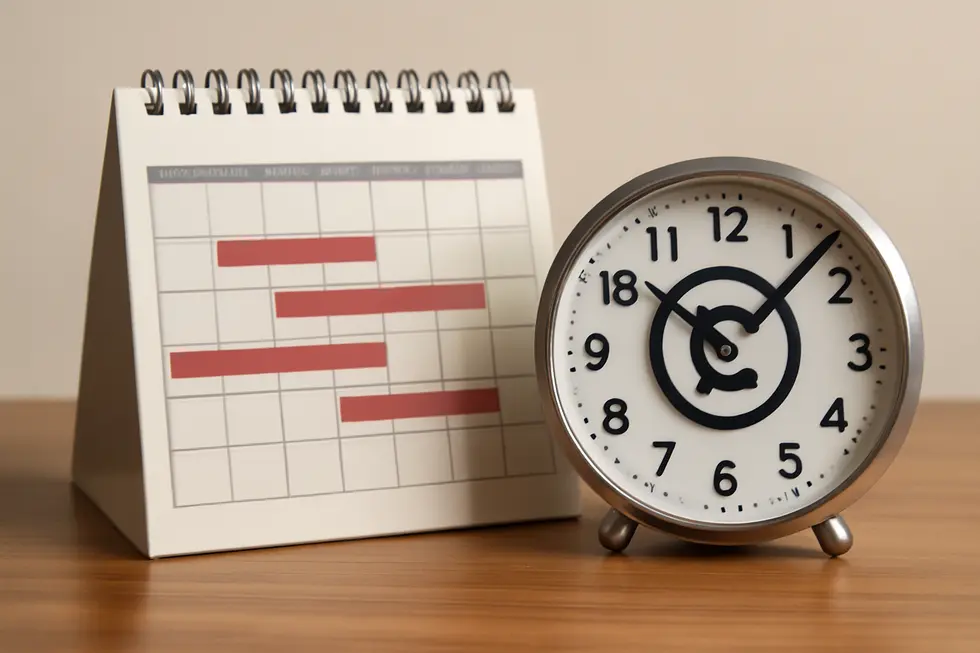
1. How Legal Limits Define Copyright Lifespan and Public Domain Access
Copyright law establishes finite protection terms, balancing exclusive rights with eventual public access. In the U.S., works created after 1977 enjoy protection for the author’s life plus 70 years. Anonymous, pseudonymous, or works made for hire receive protection for 95 years from publication or 120 years from creation, whichever is shorter. These limits reject perpetual copyright, ensuring that once terms expire, works enter the public domain free for use without permission or fees. During protection, copyright grants exclusive rights to reproduce, distribute, and create derivatives. Understanding these legal boundaries clarifies when cultural works become accessible for all. For more detailed guidance, visit U.S. Copyright Office resources. For insights into how copyright impacts business, see copyright definition for business owners.
2. Understanding Copyright Timelines and Public Domain Entry Across Creative Works
The duration of copyright protection depends on the author’s identity, creation date, and publication details, shaping when works enter the public domain. Individual authors’ works created after 1977 enjoy protection for the life of the author plus 70 years, while joint works extend that term to 70 years after the last surviving author’s death. Anonymous, pseudonymous, or “works made for hire” gain protection for either 95 years from publication or 120 years from creation, whichever expires first. Works published before 1930 are already public domain, and for those published before 1964, protection depended on renewal after an initial 28-year term. Copyright expires at year-end, so works enter public domain on January 1 following expiration. This temporal structure governs diverse media under U.S. law, enabling clear legal determination of free cultural access. For a deeper understanding, see resources like the U.S. Copyright Office guidelines.
3. Economic Dynamics Shaped by Copyright Duration and the Public Domain Transition
Copyright duration creates a critical economic incentive by granting creators exclusive rights, typically lasting the author’s life plus 70 years. This limited monopoly encourages investment and innovation by allowing financial returns through licensing and sales. Upon expiration, works enter the public domain, becoming freely accessible, which promotes cultural enrichment, education, and further creativity without legal barriers. However, economic benefits often concentrate among intermediaries, complicating creators’ gains. Legal mechanisms like termination rights also influence when works flow into the public domain, balancing creator control with public accessibility. Thus, copyright duration and its expiration carefully mediate economic interests, fostering both creation and broad societal use. For more detail, see characteristics of copyright business and related legal-economic analyses at the U.S. Copyright Office.
4. Global Variations in Copyright Terms and Their Impact on Public Domain Accessibility
Copyright duration varies widely across jurisdictions, shaped by national laws and international treaties. For example, Mexico extends protection to the life of the author plus 100 years, with past reforms gradually increasing terms without retroactive effect. The United States generally applies a life-plus-70-years rule for post-1977 works, while anonymous or corporate works have fixed terms from publication or creation. The European Union harmonizes copyright as life plus 70 years but enforces broader regulations affecting online copyright management. The Berne Convention establishes a minimum of life plus 50 years, but many nations exceed this standard. These discrepancies influence when works enter the public domain globally and affect cross-border enforcement. For more on copyright’s business aspects, see copyright definition and economics. For official guidelines, the U.S. Copyright Office offers detailed resources on public domain status.
5. How Copyright Duration Shapes Societal Access and the Growth of the Public Domain
The duration and expiration of copyright directly affect society by balancing creators’ exclusive rights with public access to knowledge and culture. Copyright typically lasts for an author’s life plus 70 years, delaying free public use until expiration. Once works enter the public domain, they become freely available, fueling education, research, and innovation by allowing unrestricted copying, adaptation, and distribution. However, extended copyright terms can hinder access, especially in libraries and digital platforms where licensing remains complex despite fair use protections. The robust public domain supports open educational resources, empowering wider learning and creativity. For creators and users alike, understanding this balance is key to navigating copyright’s societal role. More details can be found at the U.S. Copyright Office Public Domain resources.
Chapter 3: Defining Public Domain: Criteria and Categories under Copyright Law
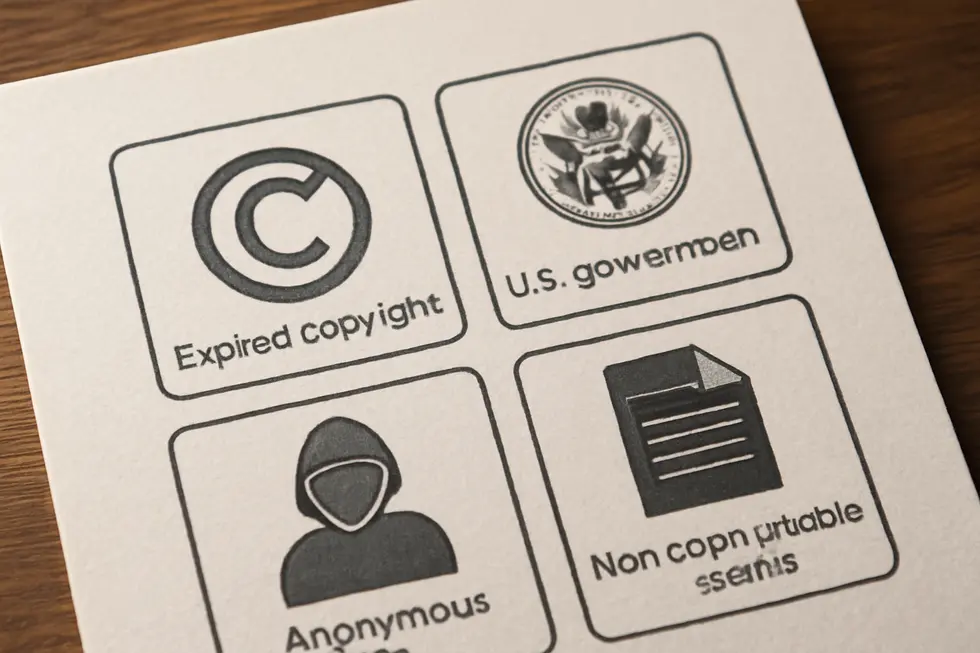
1. How Copyright Expiration Opens the Doors to the Public Domain
The expiration of copyright protection is the primary gateway for works to enter the public domain. Typically, copyrights last for the lifetime of the author plus 70 years, after which the exclusive rights granted under the law end automatically. In the U.S., works published before 1926 will enter the public domain starting January 1, 2025, allowing unrestricted use without permission or fees. This system balances creators’ rights with society’s interest in cultural accessibility, ensuring that works ultimately become a shared heritage. Other pathways include government-created works, which are never copyrighted, and voluntary dedication to the public domain. Although public domain status eliminates copyright barriers, other legal restrictions can sometimes apply. For further guidance on identifying public domain status, consult the U.S. Copyright Office resources here. This foundational principle clarifies one key criterion within the broader framework of public domain categories.
2. Federal Government Works: Navigating Public Domain Status under Copyright Law
Works created by U.S. federal government employees as part of official duties fall squarely into the public domain under Title 17 of the U.S. Code. This status enables unrestricted use of materials like government reports, congressional records, photographs, and artworks produced by federal agencies. However, this exemption typically does not extend to works of state or local governments, which may hold copyright protection. Additionally, works produced by government contractors may or may not be public domain, depending on copyright assignments. Notably, official legal documents such as statutes, court opinions, and administrative rulings are also public domain. Exceptions exist, such as certain government-funded corporations retaining copyrights. For detailed guidance, the Indiana University Library and George Washington University Himmelfarb Library provide valuable resources, complemented by explanations found in copyright distribution rights for business. More information is available at https://usnwc.libguides.com/copyright/publicdomain
3. Voluntary Dedication: A Proactive Pathway into the Public Domain
Voluntary dedication enables copyright holders to intentionally forgo exclusive rights, placing their works into the public domain before statutory expiration. Unlike automatic entry through term limits, this process relies on a clear, irrevocable declaration—often through licenses like Creative Commons Zero—that permits unrestricted reproduction, modification, and distribution. This proactive choice broadens publicly accessible resources, including artistic works, software, and texts, enhancing cultural commons. Recognizing voluntary dedication requires explicit intent and legal documentation to ensure clarity around usage rights. As a complement to expiration-driven public domain entry, voluntary dedication empowers creators to contribute openly while shaping public domain boundaries under copyright frameworks. Learn more about public domain concepts and voluntary dedication in intellectual property here. For additional insights on copyright’s business impact, visit copyright definition and economics.
4. Defining Non-Copyrightable Works That Shape the Public Domain
Certain works are inherently excluded from copyright protection and thus reside directly in the public domain. These include any work produced by the U.S. federal government, such as judicial rulings, statutes, and official reports, which are explicitly non-copyrightable. Additionally, works lacking human authorship—like natural phenomena or animal creations—are uncopyrightable due to absence of originality. Likewise, ideas, facts, procedures, and methods of operation cannot be protected as they lack expressive authorship. Expired copyrights also contribute to the public domain pool, as do voluntary waivers through mechanisms like Creative Commons CC0. While these works are free to use, derivative editions with original content may still enjoy protection. For detailed guidance, the U.S. Copyright Office’s public domain resources provide comprehensive information.
5. The Role of Historical Copyright Formalities in Defining Public Domain Eligibility
Historical copyright formalities have critically shaped which works enter the public domain under U.S. law. Early laws mandated compliance with requirements like copyright notice, registration, and renewal to secure and extend protection. Notably, works published before 1964 needed renewal after 28 years; failure to renew led them directly into the public domain. Additionally, the absence of a proper copyright notice between 1909 and 1978 often caused immediate loss of protection. Special rules applied to sound recordings and government works, which historically impacted their status. International agreements, like the URAA, later restored copyrights lost due to these formalities, showing their sustained influence. Understanding these historical conditions clarifies how copyright duration and categories of public domain works evolved. For a deeper exploration of these formalities, see the U.S. Naval War College copyright public domain guide.
Chapter 4: Navigating Legal Exceptions: Fair Use and Fair Dealing within Copyright and Public Domain
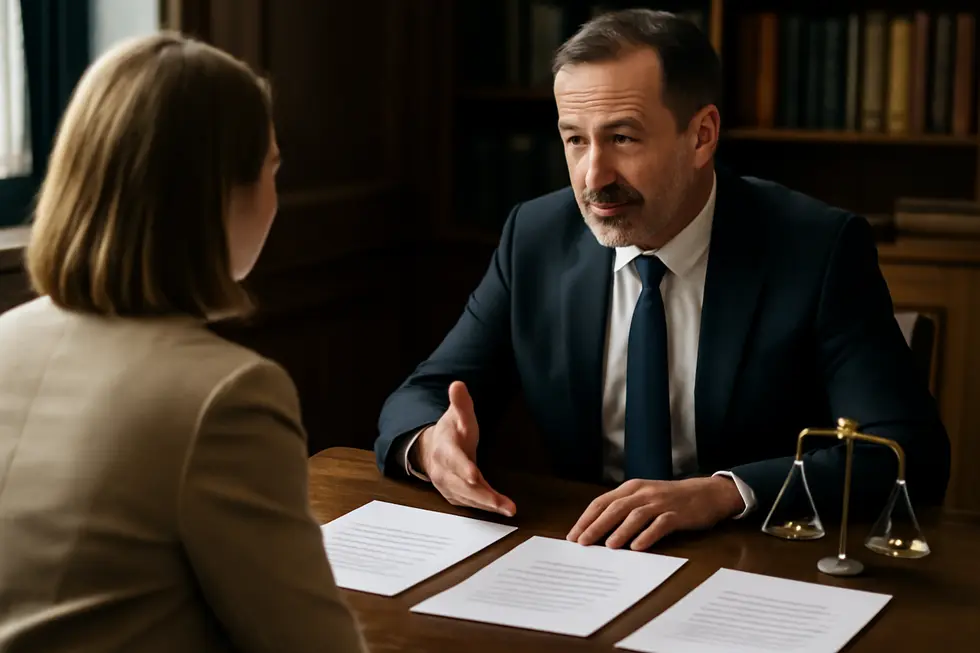
1. Balancing Access and Rights through Fair Use and Fair Dealing in Copyright Law
Fair Use and Fair Dealing are key legal doctrines providing exceptions to copyright protections, enabling limited use without permission under specific conditions. In the U.S., fair use applies a flexible four-factor test including purpose, nature, amount used, and market impact, favoring transformative uses like criticism and education. Commonwealth countries rely on fair dealing, which permits specific purposes such as research, review, and news reporting, evaluating fairness by the use’s significance and effect on copyright owners. Both frameworks balance creators’ rights with public interest, fostering creativity and knowledge sharing without undermining copyright. While public domain works are free from these restrictions, understanding these exceptions clarifies lawful use of protected material. For detailed guidance, consult resources such as the U.S. Copyright Office. For additional insights on copyright in business contexts, see copyright definition for business owners.
2. Educational Exceptions: Enabling Teaching Within Copyright’s Legal Boundaries
Educational exceptions in copyright law strike a balance between protecting creators and supporting teaching. Under 17 U.S.C. §110, nonprofit educators can perform or display lawfully obtained copyrighted works during live classroom sessions without permission, though copying is excluded. The TEACH Act extends this to online education, allowing digital transmissions under strict access and use conditions. Canadian fair dealing similarly permits fair use in education, emphasizing purpose and amount. These carefully crafted exceptions empower educators to enrich learning while respecting copyright, highlighting how legal frameworks adapt to evolving educational needs. For more on copyright scope, see copyright distribution rights for businesses. Detailed guidance is available at the U.S. Copyright Office: https://usnwc.libguides.com/copyright/publicdomain
3. Unlocking Creativity: The Essential Role of Public Domain Within Copyright’s Legal Framework
Public domain encompasses works no longer shielded by copyright or never protected, permitting free use without permission or fees. It acts as an important legal exception, striking a balance between creators’ exclusive rights and public access to cultural and educational resources. Unlike limited exceptions such as fair use, public domain works may be used broadly and without restriction, though ethical attribution remains best practice. This free access encourages innovation and scholarship, fostering new creations built upon past works. Together with copyright exceptions, the public domain ensures a dynamic flow of knowledge and artistic expression. For more detailed guidance, consult the U.S. Copyright Office public domain resources and explore how copyright terms influence legal use in business contexts through credible sources like the distribution rights in copyright.
4. Navigating the Balance Between Exclusive Rights and Public Access in Copyright
Navigating Copyright’s Balance: Copyright law grants creators exclusive rights to reproduce, distribute, and display their works, encouraging innovation and investment. Yet, these rights are not unlimited. Legal exceptions—such as fair use—permit limited, unauthorized use for commentary, education, or criticism, preserving public interest and cultural development. Creators may further control their work via selective licensing frameworks like Creative Commons, allowing sharing under certain terms. Meanwhile, works eventually enter the public domain, becoming free for all to use without permission, widening public access. This interplay safeguards both creator incentives and societal benefit, fostering a dynamic cultural ecosystem. For more on copyright rights, see copyright distribution rights. Detailed guidance is also available through resources like the U.S. Copyright Office.
5. Navigating Jurisdictional Differences in Copyright Exceptions and Public Domain Use
Copyright law across jurisdictions consistently excludes raw facts from protection, but nations diverge in defining originality for compilations and derivative works. While the U.S. emphasizes transformative originality, other countries apply varied thresholds for what constitutes protectable arrangements of facts. Likewise, exceptions such as fair use in the U.S. contrast with fair dealing doctrines prevalent elsewhere, shaping the scope of permissible unlicensed use for education, criticism, or research. Co-ownership rules and enforcement rights also differ, influencing how copyrights are exercised legally. National copyright terms vary too, affecting what works enter public domain. These nuances create a complex mosaic of legal restrictions and exceptions requiring careful navigation within international frameworks like the Berne Convention. For more detailed guidance on copyright scope and protections, see this copyright definition for business owners. Further resources are available at the U.S. Copyright Office public domain guide.
Chapter 5: Navigating Copyright Protection in New Editions of Public Domain Works
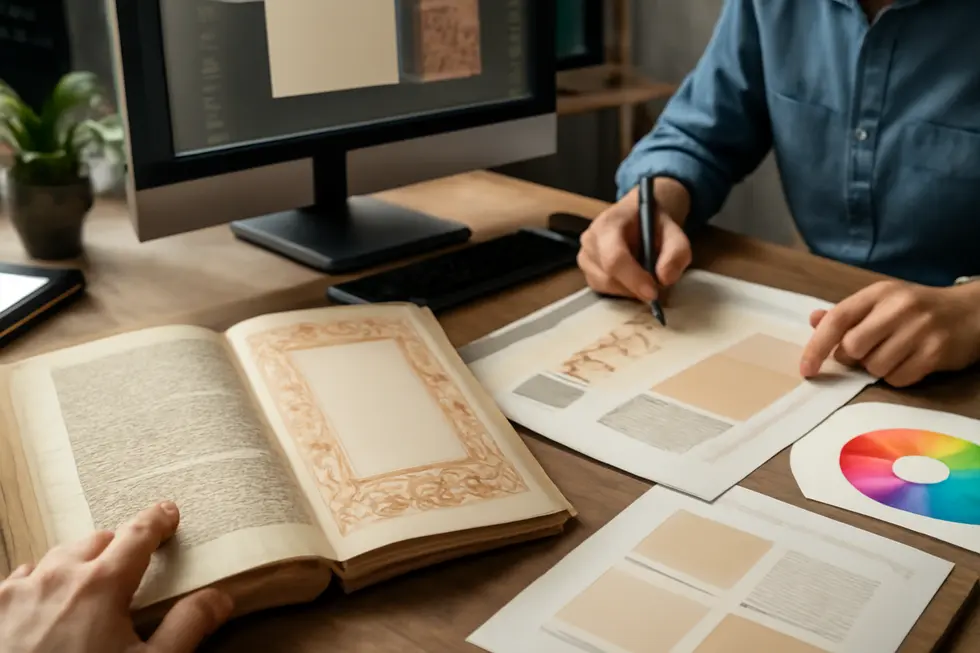
1. Balancing Original Creativity and Public Domain Freedom: Legal Boundaries for New Editions
Copyright protection for new editions of public domain works safeguards only the original creative elements added, such as annotations, introductions, or translations. The foundational public domain material remains free for anyone to use without restriction, since its copyright has expired or never existed. While derivative editions can claim copyright over new, substantial original contributions, they cannot extend protection to the underlying public domain content, facts, or ideas included unchanged. Institutional restrictions on access do not equate to copyright limits, and statutory exceptions like fair use may permit certain uses of these new editions. For comprehensive guidance, refer to the U.S. Copyright Office and landmark cases like Gracen v. Bradford Exchange. Further details on copyright scope can be explored through resources such as copyright distribution rights and the official U.S. Copyright Office public domain guide.
2. Digital Innovations Shaping Copyright and Access Controls for New Editions
Digital innovations have transformed how new editions of public domain works are protected. While the original works remain free to use, copyright can protect new creative contributions like annotations or unique formatting. Digital editions often incorporate access controls and digital rights management (DRM), limiting copying or sharing to enforce these new rights. Supported by laws such as the DMCA, these technologies extend control over public domain content in its updated forms. Consequently, the original material stays accessible, but the edition’s novel additions and technological protections establish enforceable rights, reflecting modern copyright dynamics. For guidance on public domain status, consult the U.S. Copyright Office. Learn more about how creative rights intersect with business at copyright distribution rights for business.
3. Navigating Economic Incentives and Market Effects of Copyright on Enhanced Public Domain Editions
When public domain works are transformed through original contributions such as annotations, translations, or editorial notes, these new editions acquire fresh copyrights, creating distinct economic opportunities. This added layer of protection allows publishers to monetize enhancements via sales, licensing, or subscriptions, incentivizing investments that improve accessibility and quality. However, this dynamic introduces market complexities where the base content remains free, but enhanced versions become proprietary, potentially limiting user access and competition. Striking a balance is essential—the copyright system must reward creativity in reimagining public domain works while preserving broad cultural access and fostering ongoing innovation. For more insight, see this overview of public domain economic impact and explore strategies on copyright definition in economic contexts.
4. Cross-Border Complexities in Copyright for New Editions: International Law and Geopolitical Dynamics
Copyright protection for new editions of public domain works is shaped by a complex web of international treaties and national laws, which vary widely across jurisdictions. Treaties like the Berne Convention and WIPO agreements establish baseline protections and reciprocity, yet each country enforces its own rules and restoration provisions—such as the U.S. Section 104A—that can reinstate copyrights to foreign works once considered public domain domestically. Consequently, a new edition might be free to use in one country but protected in another, complicating cross-border distribution, especially in the digital age where enforcement challenges multiply. Creators and publishers must carefully navigate these geopolitical and legal intricacies, balancing treaty obligations and sovereign laws to safeguard new contributions built on public domain materials. For detailed guidance on determining public domain status, consult resources from the U.S. Copyright Office.
5. Balancing Innovation and Access: Societal Impacts of Copyright on New Editions of Public Domain Works
Copyright protection for new editions of public domain works fosters innovation by rewarding original contributions such as annotations or translations. This incentive encourages creators to enhance cultural materials, enriching interpretation and usability. However, these new copyrights can also restrict access, as users may face costs or permissions to obtain improved versions. Libraries and institutions must navigate this tension, balancing preservation and dissemination with copyright limitations on enhanced editions. Ultimately, this legal framework strives to protect creators’ rights while supporting broad access to culture and knowledge. For guidance on public domain status, consult resources like the U.S. Copyright Office. For further insight on copyright’s role in business, see this copyright distribution rights overview.
Chapter 6: Practical Resources and Guidance on Copyright Law and Public Domain
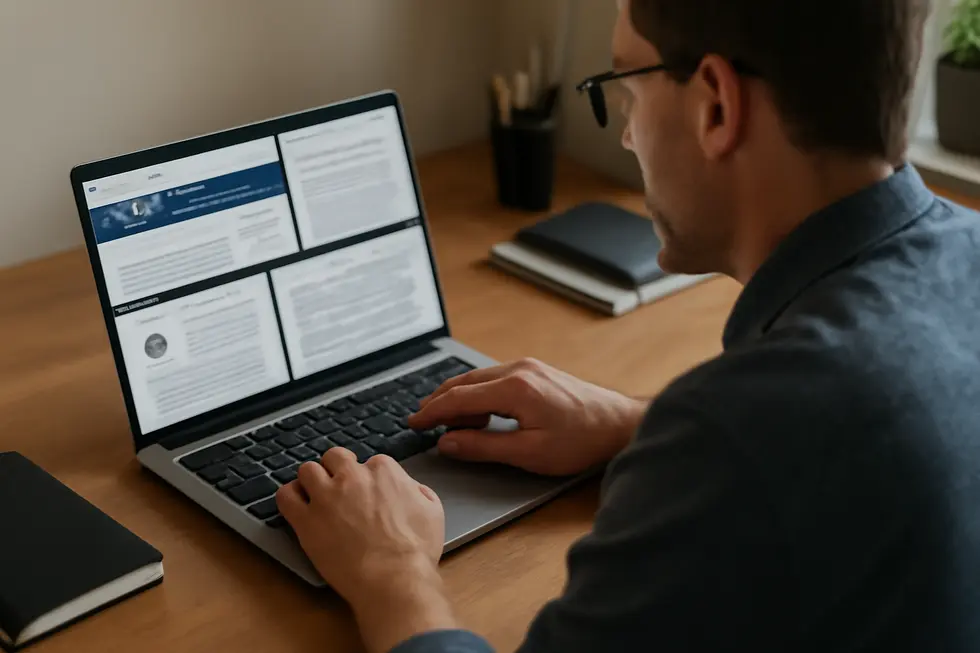
1. Navigating Legal Research Tools and Expert Resources for Copyright and Public Domain Clarity
Understanding copyright and public domain status requires reliable legal resources. Authoritative platforms offer comprehensive guides, such as detailed public domain charts and explanations of exceptions like U.S. government works. Legal treatises provide deep analysis of copyright principles and case law context, supporting thorough research. Academic libraries clarify distinctions between copyright and other intellectual property rights, also explaining licenses like Creative Commons. Fair use guidelines help determine permissible uses for education or research. Tools including U.S. Copyright Office Circulars and databases assist in verifying copyright duration or renewal. These resources create a solid base for professionals verifying if works are free to use without restriction. More information can be found through Indiana University’s research guide here and details on copyright protections at Copyright Distribution Rights and Business.
2. Navigating Public Domain: Essential Strategies for Verifying and Using Content Responsibly
Navigating Public Domain: Essential Strategies for Verifying and Using Content Responsibly
Understanding public domain requires careful verification. Although works with expired copyrights, U.S. government creations, or those dedicated to the public domain are free for use, proper confirmation is critical. Tools like Copyright Genie and institutional guides aid in determining copyright status—especially for complex cases between 1926 and 1978. While public domain works can be freely used, new editions or annotated collections may carry their own copyright. Additionally, other rights such as trademarks or privacy laws may still limit use. Giving attribution, though not mandatory, is respectful and recommended. For safe reuse, especially online, awareness of fair use limits and platform policies is also vital. For comprehensive details, consult resources such as Rush Library’s Public Domain Guide and consider insights from copyright distribution rights for businesses.
3. Navigating Academic Copyright Compliance: Essential Tools and Guidelines for Educators
Educators face complex challenges balancing copyright law with the use of public domain materials in teaching. Practical guidance from institutions like the Naval War College and Missouri S&T offers structured copyright frameworks and fair use tools tailored to academic settings. These resources emphasize responsible material access, fair dealing, and the TEACH Act’s scope for digital instruction, particularly vital in online and hybrid classrooms. Tools such as permission request templates and copyright compliance support mitigate infringement risks, especially in Massive Open Online Courses. Educators must verify public domain status carefully and apply fair use analyses to uphold legal and ethical standards in educational content sharing. For further authoritative guidance, see the Naval War College resource here.
4. Decoding Public Domain and Creative Commons: A Practical Guide for Confident Content Use
Understanding Public Domain and Creative Commons Licenses is essential for lawful and effective use of creative works. Public domain includes works whose copyrights have expired, those created by the U.S. government, or works explicitly dedicated to the public domain, permitting free use without permission or fees. However, caution is needed, as derivative editions of public domain works may carry new copyrights. Creative Commons (CC) licenses offer flexible options, allowing creators to share content under terms that may limit commercial use or require attribution. Users must carefully review these licenses to ensure compliance. Practical tools like U.S. Copyright Office records and resources from institutions like Rush Library aid in verifying a work’s status. Remember, while public domain works are free to use, other rights, such as trademarks, may still apply, so informed navigation is key.
5. Effective Rights Protection and Enforcement Strategies for Copyright Holders in a Digital Landscape
Navigating copyright protection requires clear policies and vigilant enforcement. Copyright holders must establish tailored DMCA policies to address infringement promptly, ensuring transparency by making these policies accessible and understandable to users. Monitoring unauthorized use is crucial, supported by workflows for takedown requests and fair appeal processes. Understanding that works in the public domain are free to use only when copyright has expired or rights are waived helps avoid misuse, especially since derivative collections may still hold copyrights. Educational resources and authoritative guides provide practical tools for verifying public domain status and managing rights carefully. For deeper insights, explore comprehensive guidance from the Rush Library’s Public Domain resources and bolster your protection efforts with well-designed DMCA strategies. Additionally, detailed frameworks for copyright protection tailored for businesses can be found at copyright protection for business owners.
External resource: https://library.rush.edu/copyright-resources/public-domain
Final thoughts
Understanding the complex relationship between copyright law and the public domain is crucial for business owners who rely on creative works in their operations. By grasping the fundamentals, recognizing how copyright duration influences public access, identifying what qualifies as public domain, and acknowledging potential legal restrictions, businesses can strategically utilize intellectual property without legal risks. Additionally, knowing when new editions of public domain works can be protected helps preserve unique business innovations. Access to practical resources further equips business owners to confidently navigate copyright matters. Armed with this knowledge, your business can maximize opportunities while safeguarding itself in an evolving IP landscape.
Your IP is the foundation of your success – let’s protect it together before it’s too late. We can’t wait to help you turn your ideas into legally secured assets.
About us
undefined
